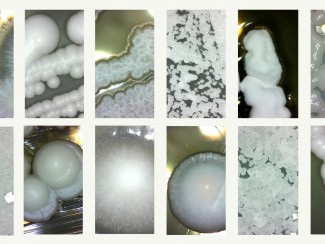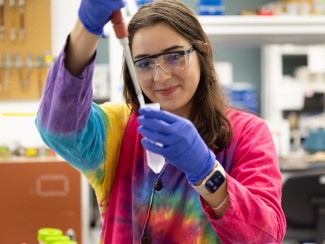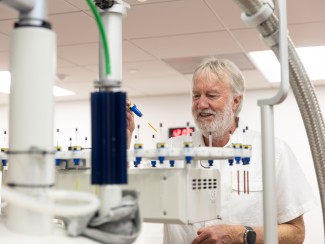
So many parts of our daily lives could be made more sustainable with bioproducts and bioenergy–fuels and products made from plants. But, how do we make these sustainable alternatives? With the help of some friendly microbes, like yeasts and bacteria.
In part two of a three part series on bioenergy, we focus on how we extract energy from plants for bioenergy. In part one, 'Bioenergy Basics: Planting Photons', we followed the energy from the sun to a plant, the first step in the bioenergy-making process. Now, we'll take a deep dive into the conversion step, accessing that plant's stored energy. We speak to bioenergy researcher Ben Hall on how yeasts and bacteria are used to eat up plants and produce fuels for our energy future.
Do you have a question about energy in Wisconsin? Ask the Wisconsin Energy Institute at communications@energy.wisc.edu or tweet us and tag #WattsUpWI.
Listen to Watt's Up, Wisconsin? on Apple podcasts, Spotify podcasts, Google Podcasts, Youtube, or anywhere you find podcasts.
Guests
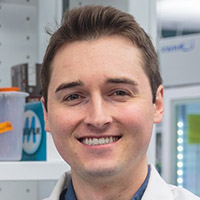 Ben Hall, Ph.D. candidate in the Donohue lab at UW–Madison
Ben Hall, Ph.D. candidate in the Donohue lab at UW–Madison
Ben researches microbes that convert the tough-to-breakdown parts of plants into more valuable products that would typically be made from fossil fuels. In addition to his time in the lab, Ben works on and off campus to expose undergraduates and high school students to science, technology, engineering, and math, including serving as a coach for a high school Science Olympiad team.
Credits
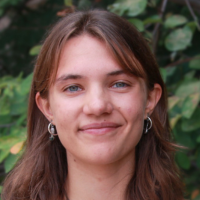 Britta Wellenstein, Host
Britta Wellenstein, Host
Britta is a Wisconsin Energy Institute communications intern and UW–Madison undergraduate majoring in Life Sciences Communication and Environmental Studies.
This episode was produced by Britta Wellenstein and Michelle Chung. Theme music by Eden Comer.
Transcript
Britta Wellenstein: When you wake up in the morning, what do you do?
[alarm ringing]
Maybe you hit snooze a few times, but when you finally get up, you probably wash your face,
[water rushing]
brush your teeth, pop some toast in the toaster,
[toaster popping]
start your car and go to work.
We don't look much into our morning routine, but all of these steps can be made more sustainable through bioenergy and bioproducts. So many aspects of our lives can be improved by innovations in the conversion of plants to products and the things we need to do that already exist. Today on Watt’s Up, Wisconsin, we'll talk about some of these changes and bioproduct possibilities.
[music]
Britta Wellenstein: We are continuing our series on bioenergy, leaving bioenergy crops and following the energy to the next step conversion. How exactly do we turn plants into products we use every day?
[light switches on]
You're listening to Watt’s Up, Wisconsin brought to you by the Wisconsin Energy Institute, where we explore your questions on energy in Wisconsin.
[cow moo]
Britta Wellenstein: I'm communications intern Britta Wellenstein. Previously on Watt's Up Wisconsin, we follow the journey of a photon and how the energy from the sun makes its way to a plant. We spoke to Great Lakes Bioenergy researcher Cullen Vens about what makes a good bioenergy crop, which is often perennial or annual plants which have more biomass and more available carbon than other plants.
[twinkling noises]
Cullen Vens: That plant will absorb that photon. It'll use it to propel some processes that are going on inside of the plant and you can follow the energy that is left behind by that photon. You can follow the electrons that are left inside the plants and watch the processes that they become a part of. You can follow from the moment the photon was absorbed.
You can follow the electrons that are moving and you can follow them all the way until they're used to break that water and produce the sugar and store the sugar and then go into the biorefinery and the sugar gets extracted away from the rest of the cell wall and gets turned into energy that we can use today.
Britta Wellenstein: We make our way to that biorefinery and learn how we extract sugars from plants for fuel. To learn more about this, I spoke to Ben Hall, a graduate student of bacteriology at University of Wisconsin–Madison, where he studies microbes used for bioenergy conversion in the Donohue Lab at the Great Lakes Bioenergy Research Center, which Ben refers to as the Center.
Ben Hall: When plants grow, they form structures, so they build up new cells and, you know, grow taller and the chemicals that make up those cells, especially the chemicals that make up the cell wall, are strings of sugars and other molecules that we can use with bacteria or yeast to turn into fuel.
So the first part of the process is harvesting the plants, so going out in the field, chopping things down, maybe grinding them up or otherwise. And then we have to break up these strings of molecules into small pieces that our microbe bees like to eat.
So you can imagine if you've ever had a really fibrous vegetable, like a piece of asparagus, super stringy and stuff. We don't like that. Neither do our microbes. We need to break up these polymers, these strings of molecules and the small bits. There are lots of ways we do that in the center. We can do that with chemical means by adding chemicals or heating things up. We can also do this with specific enzymes that come from biological sources. And these enzymes like to chew up these long strings of molecules.
[chewing sounds]
And once we get those molecules chewed up, now they're in a form that our microbes will like to eat and run. Microbes eat these small molecules like sugars or aromatic compounds. We have engineered our microbes in the Center to produce fuels or other products as kind of the byproduct of eating these molecules.
So first step is really harvest the plants, break up those long polymers, and finally feed that to our microbes, our yeast or our bacteria who we've engineered to turn that food into something that we want.
Britta Wellenstein: Microbes like yeast and bacteria eat away at plants and transform them into something else. But this isn't something that just happens in labs. Conversion is all around us. That tree stump rotting away in your front yard? Those are microbes returning plant matter to the earth. That beer you crack open after work? Those bubbles are made from microbes converting plants and releasing gas.
Ben Hall: Yeah. So yeast is a popular way to eat plant material and turn it into fuels. Yeast, I think, has been the traditional industry standard for ethanol for some of the bioethanol that you might find at gas stations. So our Center is also has multiple teams working on yeast to make isobutanol and yeast–you might be familiar with yeast in terms of bread making, so often you might add baker's yeast to help the bread rise or help the dough rise and alcoholic beverages like beer [can opening sound] use yeast to ferment the sugars from barley or other grains and turn that into ethanol and carbon dioxide and beer. So yeast is kind of a popular industry microbe. We also use multiple different types of bacteria in the Center.
Bacteria are another microbe, you know, microscopic, but they are prokaryotic. And many different bacteria are good at different things. So that's why we're exploring multiple different microbes in the Center, because we want to benefit from the variety of what nature has already evolved as being good at doing different things. So we've really tried to explore what's out there in nature, what's already good at making some of these fuels or eating some of these plant materials that we can capitalize on and further engineer to make economically viable fuels and products from plants.
Britta Wellenstein: Like Ben said, this process not only makes biofuels, but is the building blocks for other bioproducts. Bioproducts and biofuels have a lower carbon footprint and are easier to break down than fossil based sources, and they can really have an impact on so many parts of our life. So let's go back to that morning routine and see how bioproducts could make a difference.
[alarm ringing]
[water rushing]
Fragrances in your face so oftentimes dry from petroleum can be replaced with a product made from plants. This goes for other cosmetics as well. The chemical compound in conditioner that makes your hair all shiny can be derived from plants, too. Your toothbrush, which is probably made out of plastic, could be made out of a bioplastic. That's right. Plastic can be derived from plants.
You're clothes to polyester. Is a synthetic fiber derived from petroleum and is probably in some item of clothing you're wearing right now. But that could be replaced with a bio polyester or other plant based textile. And the yeast that's in your toast. Those can be used to create these plant based products. And maybe you take nutritional supplements with your breakfast.
Well, oil from algae could replace fish oil supplements. And researchers have even made medicines like acetaminophen, which is typically derived from cultures, from plants. And, of course, your car could be powered by biofuels. [car engine starting] But these products haven't transformed our morning routine yet because there are key challenges to making these bio products and biofuels.
Ben Hall: Yeah, So some of the challenges that come with creating fuels and products from these plant based sources with our microbes. One is breaking apart these strings of molecules in plants. So I mentioned once we harvest the plants, we have to break up these strings of molecules, either chemically or with enzymes. And this this is a major challenge for the field right now.
If we use enzymes, which are usually great, they tend to be more expensive than than chemicals because they have to be produced from a biological source and they're hard to purify and so on. So they tend to be expensive.
And some of the chemical means that we use can be great at breaking up these strings of molecules, but they might also create toxic products for our yeast and bacteria, so when we feed this soup, you could you could call when we feed the soup to our yeast or bacteria, there might be chemicals in there that will actually hinder the growth of our microbes, and that leads to lower production of our fuels and products and and kind of causes problem for the growth of those microbes. So that's a problem.
And then another problem that this field has in general is we want our microbes to make something for us. We want them to make a product for us. But the microbes, they just want to grow, right? The purpose of of life for them is to grow and multiply. So these are two competing objectives, because if a microbe is taking in food, using it to grow or using it to make a product are two different things.
Those don't necessarily happen simultaneously. So one challenge for this field in general that I think will will always be a challenge, even though we might find creative ways around it. Is always going to be this battle between the microbe wants to grow, but we want it to use that food to make something rather than necessarily grow.
Britta Wellenstein: But Ben says there are some creative ways to get around these competing pathways and make more of the product we want.
Ben Hall: One creative way is if we can engineer the microbe so that what it wants to do to grow is also making something we care about kind of as a waste product. So part of the reason ethanol fermentation works so well is it uses that sort of creative solution. So when yeast–yeast naturally will make ethanol in the pursuit of growth.
So when we're making beer or other products, we can just feed the yeast some sugars and it will grow, and as it's growing, it's producing ethanol. So that's an example of we want it to make ethanol, but the yeast doesn't necessarily need to make that. It's just sort of happening as a byproduct of the process it's going through to grow.
So many researchers in the Center are looking for other ways that we can reengineer the metabolic pathways in some of these microbes to take advantage of that same idea where we can engineer the pathway so that a product that we want is sort of a byproduct or a waste product of what the microbe will naturally do to grow.
Britta Wellenstein: Despite its challenges, biofuel has expanded in the past decades and is expected to continue growing. The U.S. Energy Information Agency reports that the gallons of biofuels consumed has increased tenfold from 2000 to 2021, starting at 1.65 billion gallons and growing to nearly 17 billion gallons in 2021. Bioethanol is the most popular form of biofuel, making up 82% of US biofuel consumption.
Part of this increase is from tax credits and incentives to start blending biofuels with traditional fuels, like making gasoline or diesel with their bio counterparts. As countries continue to add biofuel blending requirements, this demand is expected to grow.
Ben Hall: In the past, the biofuels industry has spent a lot of time making ethanol. Bioethanol at gas stations. If you see E85, flex fuel, these are gasoline versions that have ethanol added to them and that ethanol has come from a biological source. So maybe yeast or bacteria took those sugars from plants and converted that into ethanol so that you can use it in your car and drive on that bio-based fuel.
Currently, our Center has moved on to higher value fuels. So we are looking a lot right now and a fuel called isobutanol. It's a similar in chemical structure to ethanol, but it is more energy dense, so it means you'll get more miles per gallon of isobutanol than you would from ethanol. It also has more favorable properties when we blend it with gasoline, it's less corrosive and has better performance in engines. So isobutanol is the main fuel that our Center is looking at right now to try and make from biomass.
Britta Wellenstein: And when these types of fuels are created, are they different from if we got them for petroleum or are they just work in your car the same way and they're essentially the same as these other fuels, just the source is different or are they chemically different?
Ben Hall: So these fuels, ethanol and isobutanol are chemically different than what you would find in gasoline. Gasoline has a lot of various compounds in it, but not a lot of ethanol and isobutanol. So they are chemically different. But the reason that our center and others have looked at these fuels is because in your car they work in a pretty similar way.
You put them in a gas tank, they combust to run your combustion engine. So they work pretty well as a drop-in fuel. So the idea is that you can just drop it into your gas tank and still use your car as normal. But now you'll be using a bio-based source for your fuel rather than something that was dug up from the ground.
Britta Wellenstein: Kind of a last a little bit more of lofty question. What do you see as the future for biofuels and conversion? Do you think people will be seeing more bio options? How far out is like using these on a more industrial level?
Ben Hall: That's a great question and something I'm not sure I have enough expertise and knowledge to really answer, But from what from what we talk about in the Center, some of the technology or really a lot of the technology to make this happen exists and is out there, but right now we're working on making it economically viable. So even though the technology is there, we still can't make fuel that's cheaper than fossil fuel gasoline.
So so that's why this hasn't become–that's part of the reason why this hasn't become widespread, for example, in the United States or around the world, is because fossil fuel gasoline is still relatively cheap. However, one of the important parts of doing this work is that as we move forward years, decades, fossil fuels will become more scarce and that that will drive the price of gasoline or other fuels up.
And we will need something to still run cars on run transportation on. And the work that we're doing here today is creating those technologies so that we will be okay, and we'll still have sources of fuel when we when we reach that point of getting low on gasoline or when it's prohibitively expensive. Another thing that is helpful for thinking about maybe driving your car to work is the rise of electric vehicles, which is helpful for reducing carbon dioxide emissions because they don't need gasoline.
But we know that bio-based fuels will still be necessary because we'll never be able to power an airplane off of a battery. So in the foreseeable future, we think there will always be a need for things like jet fuel or other heavy duty fuels for mass transportation and shipping that batteries just cannot meet the demands of.
Britta Wellenstein: Even though we're seeing more and more electric vehicles, like Ben pointed out, not all vehicles can be made electric, like heavy duty trucks or aircrafts and ships, at least at this point. Aircraft and shipping makes up 11% of the United States transportation-based emissions, according to the EPA. Biofuels play a vital role in reducing emissions from these sectors.
Britta Wellenstein: Then what excites you about this research and what you're doing? Like, what kind of drives you to do it?
Ben Hall: Yeah, I think it's very important to me that we work towards, you know, net lowering our carbon dioxide emissions. Just seeing reports from around the world about how carbon dioxide emissions have affected global climate and thinking about how even here in Wisconsin we're having less snow covered days for the winter lakes. Our lakes are frozen over less days of the year.
We can expect more frequent heavy storms in Wisconsin, which is, you know, already causing problems for some residents. So I think they are already seeing the effects of high carbon dioxide in the atmosphere is kind of a motivation for me of we really need to work on this problem and work on creating fuels that are not putting more carbon dioxide out in the atmosphere, but rather having a net zero fuel where we're using plants that have actually taken carbon dioxide out of the atmosphere.That's what we're using as our source.
And another thing that I think motivates me or that I enjoy about the work is, is being in a lab really lets you test ideas as you have them. So especially working with bacteria, which is what I work with, they grow quickly. So if I have an idea for something I want to try, I can usually set it up that day and get an answer tomorrow, which I think is really satisfying for just kind of playing around with ideas and getting to see what works and what doesn't work, which is very fun intellectual exercise, I think, and very satisfying.
Britta Wellenstein: Now we have the first two parts of the biofuel equation, first the bioenergy crops, and now how we access energy and convert these crops to products and fuels. Next time on Watt’s up, Wisconsin, we'll dive into the economic side of bioenergy and how these products fit into our future.
Thanks for listening in. Do you have questions about energy? Wondering how new energy solutions are taking off in Wisconsin? Let us know by sending an email at communications@energy.wisc.edu or tweet @uwenergy and tag #WattsUpWI

